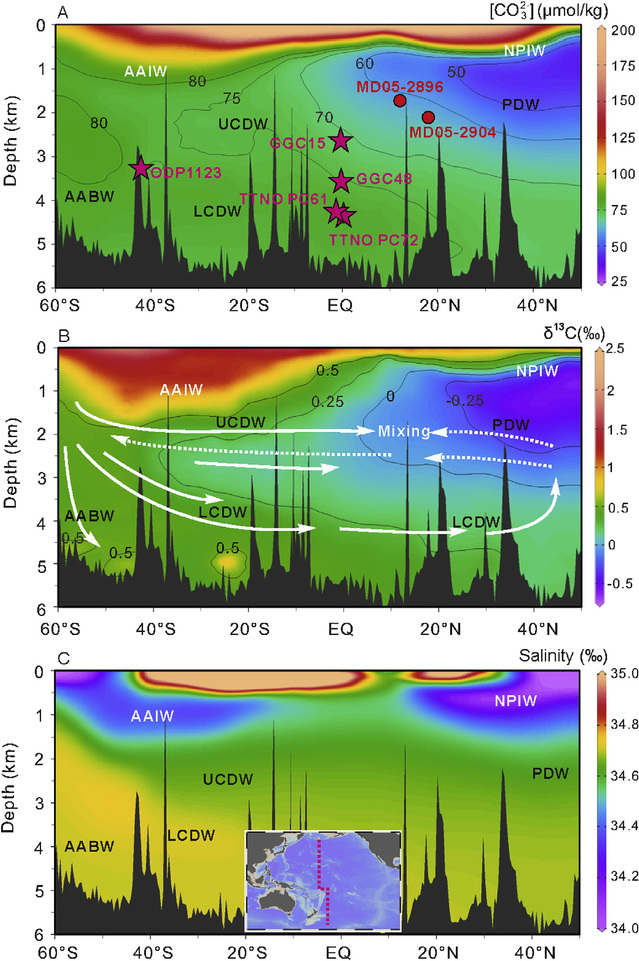Sui Wanabc,Zhimin Jiana,Xun Gongd,Haowen Danga,Jiawang Wua,Peijun Qiaoa
a State Key Laboratory of Marine Geology, Tongji University, Shanghai, 200092, China
b CAS Key Laboratory of Ocean and Marginal Sea Geology, South China Sea Institute of Oceanology, Chinese Academy of Sciences, Guangzhou, 510301, China
c Innovation Academy of South China Sea Ecology and Environmental Engineering, Chinese Academy of Science, Guangzhou, 510301, China
d Alfred-Wegener-Institut, Helmholtz-Zentrum für Polar- und Meeresforschung, Bussestr. 24, 27570, Bremerhaven, Germany
Abstract
Records of carbonate ion concentration ([CO32−]) and benthic carbon isotope (δ13C) have profound implications for exploring deep water circulation and global carbon cycle. However, information on the glacial-interglacial deep ocean [CO32−] changes is still limited, especially in the Pacific Ocean. Here, we present new deep water [CO32−] records of the last glacial cycle, reconstructed by the B/Ca ratios of benthic foraminifera Cibicidoides wuellerstorfi from two cores in the South China Sea (SCS). The deep water [CO32−] changes of the SCS display similar trends with that of the western Pacific as well as “Pacific-type” CaCO3 (%), suggesting that the deep water carbonate chemistry of the SCS may reflect that of the Pacific. Our results support that carbonate dissolution is the primary driver for “Pacific-type” CaCO3 preservation during the late Quaternary glacial cycles. At the marine isotope stage (MIS) 5a to MIS 4 transition, deep water [CO32−] decreased with an amplitude of ∼7 μmol/kg in the SCS, roughly consistent with that from the Pacific cores at 2300–4300 m water depth. Considering a greater oceanic alkalinity and stronger carbonate dissolution at that time, this implies that deep Pacific carbon storage increased. The gradients of deep water [CO32−] and δ13C between the Pacific and the SCS reduced during extreme glacials (e.g., MIS 2, 4 and 6) relative to interglacials (e.g., MIS 1 and 5e), indicating weakened deep ocean ventilation and more sluggish Pacific deep-water circulation. This change is also confirmed by meridional δ13C distributions in the western Pacific for the Holocene and the last glacial maximum (LGM), and further supported by climate simulations using a complex Earth System Model. Overall, our results suggest that the increased deep Pacific carbon storage correlated to increased oceanic alkalinity and more sluggish Pacific deep-water circulation would have contributed to the atmospheric CO2 decrease during the last glacial period.
Full Article:https://www.sciencedirect.com/science/article/pii/S0277379120304613



